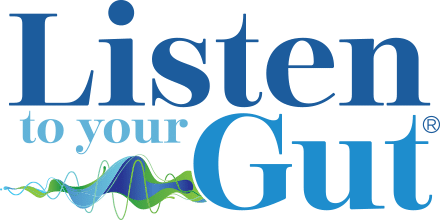What Causes Breastfeeding Problems?
Many new mothers are surprised and disappointed to discover that breastfeeding does not always come naturally, and may even be challenging. Let’s start by looking at common problems you might experience with your breasts and nipples and I’m going to give you the effective remedies I used for each (I breastfed 3 children for a total of five years). Then further down, let’s get into what you can do if you have issues with milk production, colic, etc.
1) Sore or oversensitive nipples – Nipples are extra sensitive during pregnancy and for the first few days after giving birth, and soreness is normal for newly breastfeeding mothers. The initial pain of the baby latching on should diminish within a minute of beginning to breastfeed, if not, then baby’s latch might be the issue. If you can’t figure it out, please contact your local La Leche League and they will help/support you free of charge. In some cases nipples may crack, bruise or blister – usually because the baby is not getting enough of the breast in its mouth when latching on. The best salve to rub into your nipples to prevent dryness, abrasion or cracking is Lanolin (from healthy, well-treated sheep). Seriously, I tried every salve going and nothing beats lanolin. It’s safe for baby and they have no issues with the taste or texture.
2) Engorgement – a painful swelling of the breasts, which can feel warm and throbbing. Nursing or expressing some breast milk can relieve some of the pressure, but only feed or express for a few minutes. Any longer can stimulate the production of more milk, leading to more swelling. Standing under a hot shower and just letting your milk drip out is also effective.
3) Plugged milk ducts – a plugged duct may present as a tender spot on your breast. Try heat and massage to get the milk moving through the duct again. You can also do this while in a hot bath or shower – massage under the hot water and massage all around and then towards the direction you want the milk to flow.
4) Mastitis – If a milk duct remains plugged, or if a nipple cracks, infection might set in, resulting in a painful red, swollen spot on your breast. You may also experience flu-like symptoms. Most doctors/midwives recommend you treat mastitis with heat, massage, rest and frequent nursing, and if that’s not effective within 24 hours, speak to your doctor. For myself, if the infected area was on the aureola or nipple, then I would apply some diluted wild oregano – a 7:1 dilution would work well (7 drops organic olive oil to 1 drop wild oregano oil). Apply after baby nurses so you have the maximum amount of time for it to soak in before baby’s next feed. Anywhere else on the breast (that would not contact baby’s face or mouth) I would use regular wild oregano. NOTE: This means a commercial brand of wild oregano that has already been diluted 3:1 with olive oil (NOT Essential oil of oregano).
5) Milk blisters – sometimes a layer of skin will form over a duct opening on the nipple, trapping milk behind it. This is also called a milk bleb or nipple bleb. It will appear as a white dot, and may feel like there’s something sharp stuck in your nipple. Apply a warm, wet compress to the area, and try 1) gently rubbing or scratching the extra skin off to release the bleb, 2) massaging and compressing the area, 3) expressing milk or 4) nursing or pumping. Milk blisters can be very painful, and if these methods fail, you may have to see your doctor.
6) Low milk supply – Episodes of low milk supply are not uncommon, and are sometimes a result of the baby’s inability to nurse properly. Low milk supply can often be resolved by helping the baby achieve a correct latch, nursing longer and/or more often, and pumping to stimulate milk production. Mum also may be getting enough calories, but not enough nutrients. Or mum might be really stressed and this may affect milk production. Keep reading for some solutions below…

Natural Remedies For Breastmilk Issues
If you absolutely cannot breastfeed your baby, or if you have to supplement with formula feeding then there are things you can add to commercial infant formulas to increase their low nutrient value.
But first, please go to a La Leche League meeting and/or search their website, as there is so much help available for breastfeeding problems of all kinds.
If your baby suffers from colic, or projectile vomiting after feeding, or any other digestive problem, this can make breastfeeding difficult. And if you’re not getting enough sleep and continually stressed from a colicky baby, this can decrease your milk production – be sure and watch my video Baby Fart Aerobics to get colic and other digestive difficulties handled/healed quickly.
Anemia is also a common cause of not being able to produce enough milk.
You can definitely solve whatever problem is causing you to not produce enough milk – did you know that adoptive mothers can breastfeed their new babies – even if they’ve never been pregnant or given birth?
Also, even if your milk dries up completely due to illness or trauma, you can re-start it and get back to an exclusively breastfed baby. I know because this is what happened to me after the birth of my third child – it’s called relactation. Plug that into google and there are lots of detailed instructions on how to relactate a baby. So if mothers can go from completely dried-up, to nursing a baby full-time, have faith that you certainly can increase milk production if you get the right help.
Check in with La Leche League for herbs you can take and make an appointment with a naturopathic or functional medicine doctor to see if there’s a hormonal or deeper issue going on.
Exclusive Formula Feeding
If you do have to formula feed a newborn, you’ll need to add a number of crucial nutrients to your newborn formula to facilitate proper brain development and help safeguard his/her gut. The best and most comprehensive instructions for infant formula supplementation can be found at Dr. Joseph Mercola’s website: “Healthy Alternative to Conventional Infant Formula”. There’s no point in me giving you additional instructions here, as this article really covers it all (and gives a few different options). If you’re exclusively formula feeding, you should also add Natren brand probiotic (Life Start – B. infantis) to baby’s formula bottles.
Partial Formula Feeding
If you’re using formula to supplement your breastfeeding, you should still read the article at mercola.com as the information is vital. Depending on the amount you’re still breastfeeding, you’ll either need to fortify your formula feedings as per the Mercola article instructions, or you can use Jini’s Formula Supplement Protocol below.
My protocol assumes that you are taking the supplements recommended below (see: Essential Supplements) – if you are not, then you need to follow the protocol on Dr. Mercola’s site instead. My protocol is nowhere near as good as the baby feeding protocol on Dr. Mercola’s site. But, if you simply can’t manage to implement Mercola’s comprehensive protocol, then this protocol is still far better than just plain formula.
Jini’s Formula Supplement Protocol
- Raw, organic goat’s milk or raw, organic cow’s milk*
- 1 scoop of organic formula
- 1/8 tsp. Natren Life Start (B. infantis) probiotic until baby starts eating solids, then alternate/rotate with the other Natren probiotics: 1/8 tsp. Life Start, 1/8 tsp. Megadophilus, 1/8 tsp. Digesta-Lac
- 1/2 tsp. Udo’s Choice Oil Blend
- 1 cod liver oil capsule (puncture and squeeze in baby’s mouth if possible)
- 1/2 Moducare capsule (plant sterols/fats) – boosts immunity after weaning. Note: If breastfeeding three times per day or more, then you don’t need to add Moducare.
Place formula, probiotics, Udo’s oil, and Moducare in baby’s bottle. Add one ounce of milk and mix with a spoon, crushing all lumps, until a smooth paste is formed. Then add the rest of the milk while stirring well. Put the lid on the bottle, block the nipple hole with your finger, and shake vigorously. It’s okay to heat the milk to normal infant feeding temperature – but closer to room temperature is better. Remember to never heat infant milk or formula in the microwave.
*If you can’t get raw (unpasteurized, non-homogenized) goat’s or cow’s milk (see realmilk.com for suppliers) then just use your regular formula with water or almond milk. However, if your baby is less than four months old and you can’t get raw milk, then you really should use the protocol on Mercola’s site instead. Do not ever use pasteurized cow’s milk or soy milk for baby feeding.
Rice milk has a very high glycemic index and will accelerate tooth decay. Soy milk contains massive amounts of estrogen, blocks mineral absorption and also depresses thyroid function – no one should ingest soy milk! Homemade almond milk (remember to strain it through a fine cheesecloth) is best – but organic store bought is okay.
Essential Supplements For Breastfeeding Moms
These are the supplements I took while pregnant and breastfeeding each of my 3 healthy kids (no gut issues, no allergies, nothing). I also did not vaccinate them. Just saying.
Note: I am going to give links to each product in my Health Shoppe, so you can see which brand I recommend and why – you can also order them in to your local health store.
Here are the supplements I believe every mother should take during pregnancy (and ideally for three months prior to conception), for the duration of breastfeeding, and then for at least three months following weaning (to replenish your own body stores and health):
- Prenatal Multivitamin
- Udo’s Oil (or flax oil) – at least one tablespoon per day
- Cod Liver Oil – Six capsules or two teaspoons per day
- Bone Matrix – 1-2 doses per day
- Trace Matrix – One dose per day
- Absorb Plus or protein shake – as needed – if underweight, or no time to eat properly
- Natren probiotics in powder form (Megadophilus, Bifido Factor, Life Start, Digesta-Lac) or capsules (if you prefer and have no diarrhea or heartburn).
- If you have IBD or IBS, then follow the Healing Diet in Listen To Your Gut that suits your symptoms, or at least strictly follow the Maintenance Diet (see below)
Other supplements that are also be beneficial:
- Coenzyme Q10
- Pycnogenol or Grape Seed Extract
- Vitamin C in mineral ascorbate form
- Angstrom/Nanoparticle-sized Iron if you need additional iron supplementation – when taken with lots of water, this form will not constipate you, nor will it aggravate or trigger intestinal bleeding.
There have been many long-term studies done showing that the health of your baby in-utero will pre-determine your child’s health until the late teenage years. So please don’t make the mistake of assuming that you can eat whatever you want while pregnant!
I feel that pregnancy and lactation (breastfeeding) should be the most disciplined, healthy diet and lifestyle time of your life. I strongly recommend you follow the guidelines in this Maintenance Diet and also take the supplements recommended above to give your baby the best chance at good health, optimal brain functioning, and avoiding allergies and obesity.
Maintenance Diet
- No processed, pre-packaged foods.
- No foods containing preservatives, nitrates and nitrites (these have actually been banned by the FDA because they are so carcinogenic to the gut, but the meat industry refused to comply and so they are still in all your commercial hot dogs and deli meats), monosodium glutamate (MSG – it interferes with neural functioning), carrageenan (large quantities have been used to induce ulcerative colitis in guinea pigs and primates), or anything else that sounds like a manufactured chemical compound.
- No margarine or butter substitutes – often treated with chemical solvents and bleaches, resulting in deformed, highly toxic, trans-fatty acids. Even the cold-pressed margarines are not good as your body doesn’t need so much of those oils, and they prevent you from using butter – which your body needs a lot of. Use real butter (preferably made from raw, organic milk), cold-pressed virgin olive oil, or unrefined coconut oil instead. Do not use regular mayonnaise either – only mayonnaise made from cold-pressed oils.
- No artificial sweeteners of any kind (like aspartame, nutrasweet, saccharine, Splenda, sucralose, acesulfame-K, etc.) – toxic and proven to cause memory loss, can also be highly addictive and contribute to hyperactivity and seizures in some people.
- No artificial colors or flavors – especially since the introduction of neural flavor blockers and enhancers.
- No pasteurized milk products: milk, yogurt, cheese, ice cream, etc. Raw milk products are okay and actually promote health. But pasteurized or ultrapasteurized (UHT) dairy products must be strictly avoided. For more info on the health benefits of raw milk, see Realmilk.com


